Reaching heaven
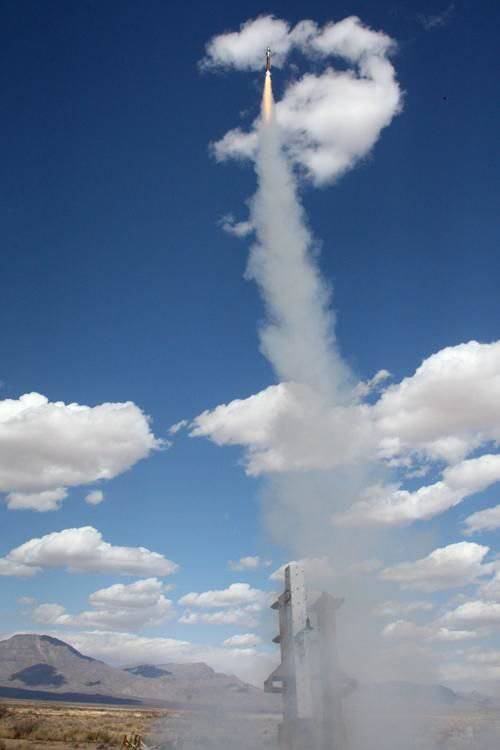
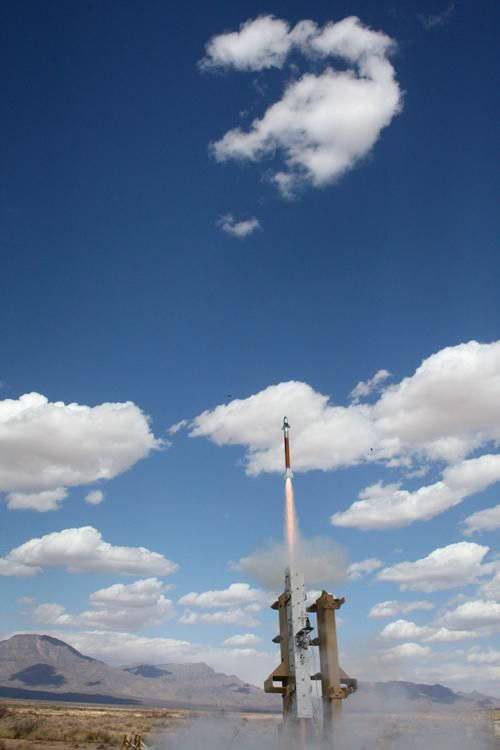
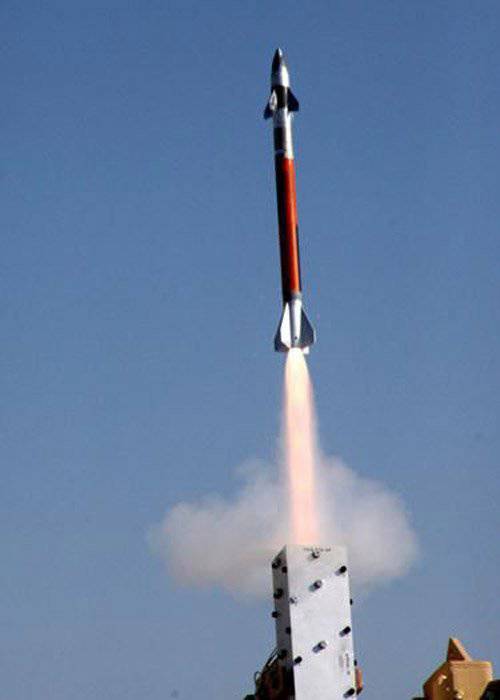
In March, Lockheed Martin’s EAPS 2013 was tested against a mortar shot.
Missiles, artillery and mortar threats cause great concern in theaters of operations, providing effective protection against them has become an urgent operational need in Afghanistan. Consider some of these systems.
In May 2013, Raytheon completed two test test flights of its Ai3 (Accelerated Improved Intercept Initiative) rocket. It will become part of a system designed to protect deployed troops and military bases abroad, and will provide low-cost opportunities to intercept unguided missiles, artillery shells and mines (C-RAM - counter-rocket, artillery and mortar).
The Ai3 rocket is just one of the C-RAM development programs. Earlier in March, Lockheed Martin conducted a test-driven flight of its MHTK (Miniature Hit-To-Kill) miniature missile at the White Sands range as part of its Extended Protection and Survivability EAPS (Extended Area Protection and Survival) project.
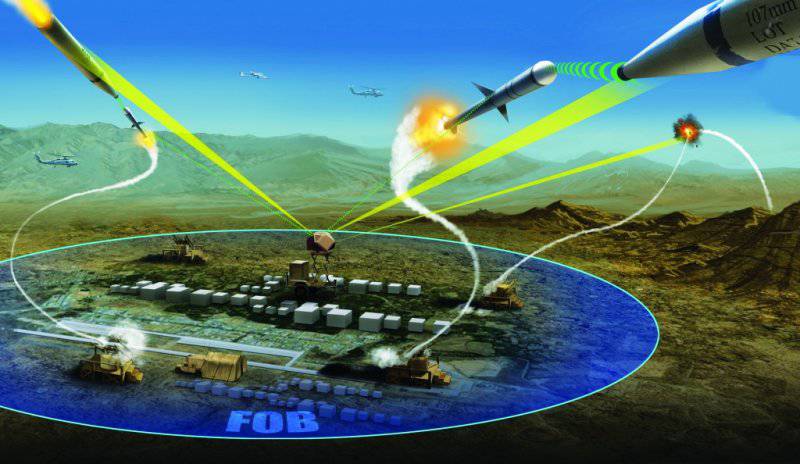
Artistic presentation of the Ai3 rocket anti-aircraft capabilities protecting the base from missile attacks
New generations
These two rocket programs are an indicator of where C-RAM technology and capabilities are going in the coming years. Attacks of missiles, artillery and mortars last for a matter of seconds, and the current capabilities of the C-RAM are provided by weapon systems that are effective, but have limitations on some types of targets and increase the risk of neutralizing the target near the object to be attacked.
New missile interceptors will provide improved C-RAM protection due to the destruction of missiles, artillery and mortar targets at distant approaches. However, they must be economically viable - the destruction of targets with the help of expensive missiles can give an enemy advantage. Missiles must be able to hit more complex targets moving at high speed at low altitude.
Rocket Ai3 created mainly for these purposes. Raytheon in February 2012 received an order for 79,2 million dollars to develop an interceptor missile as part of the 18 month-long process of creating a technology demo. The result of this work should be the interception of a rocket moving at the so-called low angle of elevation (the angle of the barrel of the gun, which shoots artillery ammunition).
Steve Bennett, program director for Ai3 at Raytheon, said: "The low-elevation angle rockets are the hardest to hit because of the very short flight time ... and also difficult to detect, track and intercept."
In order to reduce the cost in the Ai3 rockets, an existing technology is used. Bennett noted that Ai3 is a variant of the AIM-9M Sidewinder “air-to-air” missile and has the same rocket engine. The software and algorithms for sensors are taken from the Small Diameter Bomb II, which allows the product to enter the market faster and save time developing and testing new components.
Urgent needs
The requirements of the US Army on the capabilities of C-RAM based on the missile complex were formulated in a joint statement on operational requirements. These requirements were defined in the middle of 2011, the request for proposals was issued in October of 2011, industrial proposals were approved a month later, and the contract was issued in February of 2012.
The Avenger launcher, control system and Ku-band RF sensor are supplied by the government, and Raytheon, in turn, demonstrated a complete defeat chain using all the components of the system.
“As soon as the radar detects an unmasked target and identifies it as a threat to the protected zone, it transmits information to the control center, tracks the target, and then the Ai3 rocket knocks it down. The duration of the entire combat episode is less than 10 seconds, ”Bennet said.
The real launches of ten Ai3 missiles took place in August 2013. If eight out of ten missiles successfully hit targets, then Ai3 will move to the initial production phase. The current contract provides for options for 754 rockets, their production will take 12 months.
Meanwhile, Lockheed Martin and its research center aviation and missile systems continues to develop the EAPS project. The first contract was issued in 2007, and then funded in accordance with several special orders.
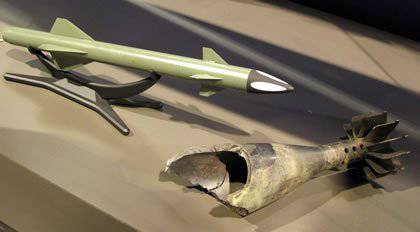
MHTK rocket and mortar she struck
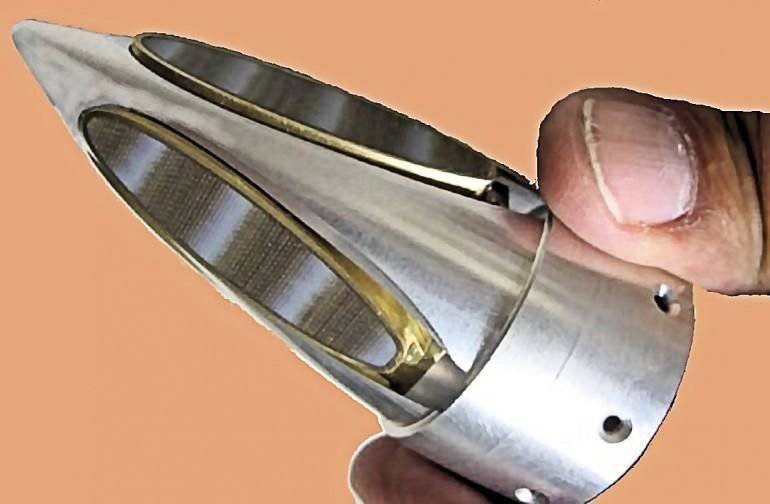
The nose of the MHTK rocket close up
Small size
The MHTK rocket has a total length of 68 - 69 cm, diameter 40 mm, weight 2,26 kg at launch. The type of direct attack rocket means that it does not have a warhead, and the destruction of the target is carried out due to the kinetic energy of the rocket flying up to the target at a very high speed. The low mass and good maneuverability of the rocket increase its effectiveness when searching for a target.
The small size of the rocket and the absence of a warhead mean that it is economically profitable to manufacture and Lockheed Martin is committed to keeping its value within 16000 dollars apiece.
Chris Murphy, director of business development for EAPS at Lockheed Martin, said that the first rocket launches took place in May 2012, where the aerodynamics of the rocket was tested. The goal of the EAPS project is to increase interception capabilities to “at least 2,5 km”, which is more than 1 km provided by existing gun systems.
Murphy said that after the first flight it was planned to conduct interception tests at the end of 2012, but this schedule was changed to make an additional assessment, after which interception tests were conducted in March 2013.
“During the flight tests, we basically studied each component of the system, having a target in the air, we could see how the rocket would react to signals from the target and how to receive corrective signals from the ground station,” he explained.
Another interception test was conducted in September 2013 of the year against the same mortar shot that was used in the March test.
“Depending on the availability of permitted ranges from December to January [2013 - 14], we will fire a missile that is interesting to the army. “I would describe this goal as medium caliber,” Murphy continued. “We understand that the army wants to continue to invest in science and technology, and we can expect several tests, approximately two to four per year.”
Further development
The company Lockheed Martin is also considering the possibility of installing a homing head in a rocket (this eliminates the need for a ground light station) and is developing its own launcher concept.
Like the Ai3, the MHTK rocket is designed for use with any launcher and command and control system provided by the US Army. Raytheon and Lockheed Martin intend to offer their systems to comply with the IFPC2-I (Indirect Fire Protection Capability Increment 2 - Intercept - Intercept - Interception Indirect Fire Protection - Interception) program, which has a C-RAM component.
IFPC2-I will be financed from the presidential budget in the amount of 600 - 700 million dollars in the period from 2014 to 2018. The request for information was released in August 2012 of the year, however, activity in this direction has been suspended until now and the request is not expected earlier than 2015 - 2016 of the year.
The army will gain access to the EAPS MHTK, Ai3, and other software technologies in order to understand whether they meet the C-RAM requirements of the army. There are also plans to develop capabilities to combat UAVs and even combat cruise missiles.
According to the request for information, the army wants to have a technology that has already reached the sixth level of readiness or higher so that it can be immediately introduced into the development and implementation phase from the beginning of 2016.
In the meantime, work continues to protect existing units using radar systems that can offer recognition and warning capabilities.
In June, the Australian Army leased 2010 from Saab Systems for 45,2 a million dollars moving Giraffe AMB 740 mobile multipath radar mounted on a Piranha machine. He was leased due to the fact that the Australian army assumed responsibility for the C-RAM protection of the multinational base in Afghanistan in December 2010. Giraffe has become the fastest-deployed system that has been tested in action by contingents from other countries, including Estonia, France, Sweden, the United Kingdom and the United States.
Intermediate opportunities
Renting the radar allowed us to study the interim detection capabilities of C-RAM, followed by the purchase of three Giraffe AMB radars for the 83 million dollar contract issued by the Australian army in December 2010 of the year as part of the Land 19 Phase 7A land-based defense project.
The first two were delivered in September 2012 of the year and were sent directly to Afghanistan, while the third was transferred to the Australian army in January 2013 and left in Australia in the 16-th airborne regiment for training.
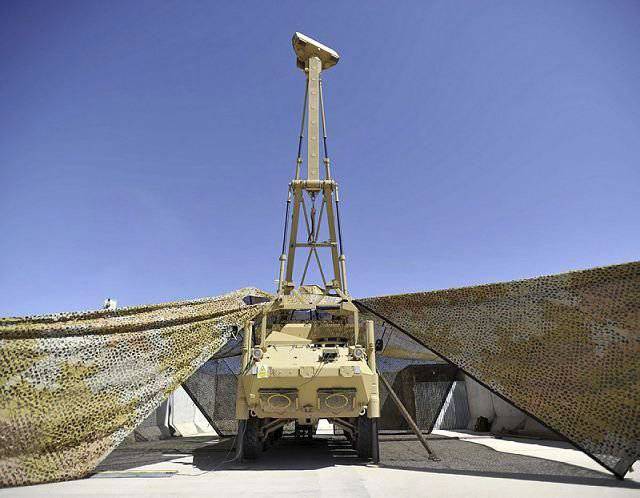
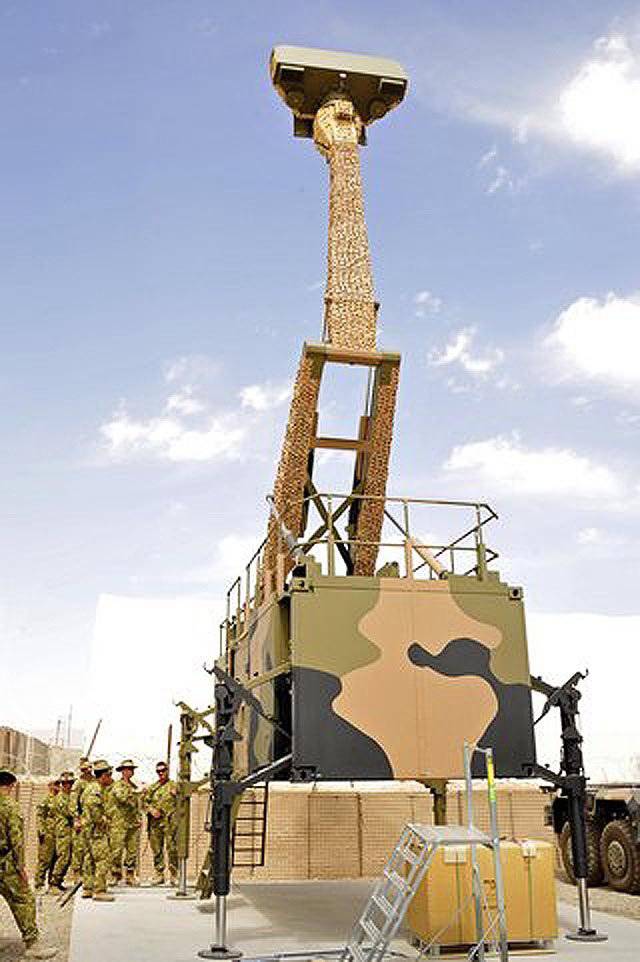
The Giraffe AMB Radar is used by the Australian Army in Afghanistan for early warning of attacks from missiles, artillery or mortar rounds.
Giraffe AMB consists of a mast antenna, a rotating angular velocity of 60 rpm, providing circular coverage at 360 ° at a distance of 20 km for C-RAM systems and at a distance of 120 km for aerial purposes at low and high altitudes. It is transported on three SX45 8x8 trucks from Rheinmetall MAN Military Vehicles (RMMV). As soon as the radar determines a ballistic target, it issues estimated data on the coordinates of the launch point and the meeting point, which are then refined with each new measurement made by the radar in order to calculate the exact meeting point.
A Saab spokesman said the company is interested in the plans of the Australian Army to improve its ground-based missile defense capabilities in the Land 19 Phase 7B phase, which incorporates the C-RAM component.
A representative from the Australian Army said: “The Land 19 Phase 7B phase will be based on the protection capabilities of its forces,“ discovered and warned ”ground-based missile defense, acquired through the Phase 7A Phase. It will combine the functions “discovered and warned” of the Phase 7A RAM Stage and the capabilities of the ground-based missile defense, which will allow detecting, controlling and weakening the effects of weapons and sensors. ”
The Land 19 project also purchased a lightweight counter mortar radar LCMR (Lightweight Counter Mortar Radar), manufactured for the American army by SRC under an agreement on arms sales abroad. The LCMR includes a LAN architecture, advanced area air defense control systems, anti-aircraft and anti-missile defense workstations, field service, spare parts, training, and technical and logistical support.
This project also includes the Wireless Audio and Visual Emergency System (WAVES) audiovisual warning system, which gives warning signals to the operators at the base, announcing an alarm to personnel in the immediate vicinity of the alleged projectile hits, due to a series of sirens and flashing lights.
UK Accents
UK C-RAM capabilities are being developed under the AS&W (Automated Sense and Warn) project. It also uses the Giraffe AMB and LCMR radars. Interception capabilities were provided by the Phalanx Weapon System (LPWS) ground-based complex, but it was borrowed from fleet and then returned after the completion of the Telic operation in Iraq in 2010.
In addition to AS&W networked systems, the British Department of Defense has developed and deployed Qinetiq Alarm short-range detection radar to counter the missile threat in the forward base zone.
The representative of the Ministry of Defense said: "C-RAM is an urgent requirement and as such it is not included in the mandatory set of programs of the Ministry." This means that it is not funded, but there are 12,4 billion dollars of "unallocated funds" that are available for additional projects. However, these external projects will receive funding "only if they must be completed in a timely manner and only in accordance with the assessment of their priority at the moment."
Warning systems help personnel evacuate to a safe area, but, nevertheless, missiles and projectiles can still reach the base. In Iraq, interception capabilities of C-RAM were provided by the LPWS complex. Raytheon manufactured the 10 complexes for the UK and the 44 complex for the USA, which deployed the 29 complexes. In addition to Phalanx, the idea of the complex is to use the Gatling 20-mm gun for air defense in order to “saturate” the airspace with metal to destroy any approaching objects.
Without Germany, nowhere
The US Army, at military bases in the states of Oklahoma and Washington, organizes two experienced air defense battalions equipped with LPWS complexes. The army will operate the facilities, and Raytheon will provide maintenance personnel. Future LPWS deployment plans still need to be defined.
Germany has recently developed a short-range anti-aircraft artillery system MANTIS (Modular, Automatic and Network-capable Targeting and Interception System). Developed by Rheinmetall Air Defense, the MANTIS base complex includes two Oerlikon Skyshield radar installations that are connected to a control station equipped in a standard protected 20-foot container.
The control station manages target interception through four Millennium 35-mm guns firing Ahead ammunition (Advanced Hit Efficiency And Destruction - improved hitting and destruction efficiency), which in flight releases a cloud of small ready-made destructive elements destroying an approaching target. The gun can shoot with a rate of 1000 shots / min, although the total ammunition is just an 252 shot.

Anti-aircraft artillery complex MANTIS, developed by Rheinmetall
According to Rheinmetall, in this basic configuration, MANTIS can protect a base or site with dimensions of 500 x 500 m. Each component can be transported by truck. The Skyshield sensor consists of an I-band search radar (8,6 - 9,5 GHz), an optional “friend-to-others” identification unit, a data processing unit, a power supply system and an optoelectronic unit consisting of a television camera, an IR camera, a video tracking module, a laser range finder and a measurement device range.
The German Air Force bought two MANTIS complexes, each consisting of six Millennium 35-mm cannons, two radar stations and a command post with corresponding service and simulation units. There are options to purchase two additional complexes, but they have not been exercised. Germany recently withdrew its troops from Afghanistan, so MANTIS is still to be deployed in active hostilities abroad.
Cloud pillar
In Israel, Rafael developed the Iron Dome system to meet national needs for C-RAM capabilities. A company spokesman reported that it was developed in just two and a half years and intercepted "since April 2011 of the year over 500 missiles launched at strategic sites and populated areas in southern Israel, including Pillar of Defense operation in November 2012, where the Iron Dome intercepted the 421 rocket with a success rate of over 85%. ”
The Iron Dome consists of an ELTA EL / M-2084 multitasking radar for fire control, a BMC combat control and monitoring unit developed by mPrest Systems, 20 anti-missile launchers and Tamir anti-missiles. When a radar detects a target, its trajectory is estimated by the BMC and the Tamir rocket is launched to intercept it.
A company spokesman said that during the launch, the rocket receives trajectory data from the BMC via a communication channel. Next, Tamir flies on its own and uses its homing head to capture a target at close range and leads a rocket inside a given corridor.
A remote rocket fuse initiates a warhead in order to inflict maximum damage to the target. One launcher can protect a medium-sized city from missiles and mortar shells day and night; it identifies only those threats that fly into the protected zone.
In addition to the use of gun and missile systems for C-RAM, there is a third option - directional energy or laser systems. Boeing is working on a high-energy laser (HEL) high-energy laser program for the US aerospace command.
Rheinmetall also develops a HEL system. In November, 2012 of the year she conducted tests of weapon stations with a power of 30 kW and 20 kW, equipped with Oerlikon Millennium gun mounts and connected to Skyguard fire control system, at a range in Switzerland.
The company reported that 15-mm steel beam was cut at a distance of 1000 meters, and aerial targets were destroyed at a distance of 2000 meters. During one more test, 82-mm steel mortar ammunition was also tracked and destroyed. Rheinmetall wants to integrate HEL into the MANTIS complex, as they believe that the combination of HEL and 35-mm cannon firing Ahead ammunition is the best C-RAM solution for the future.
Materials used:
Land warfare international
www.lockheedmartin.com
www.raytheon.com
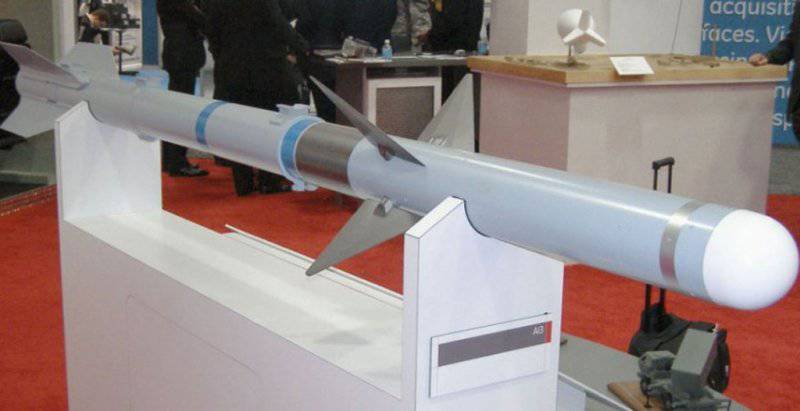
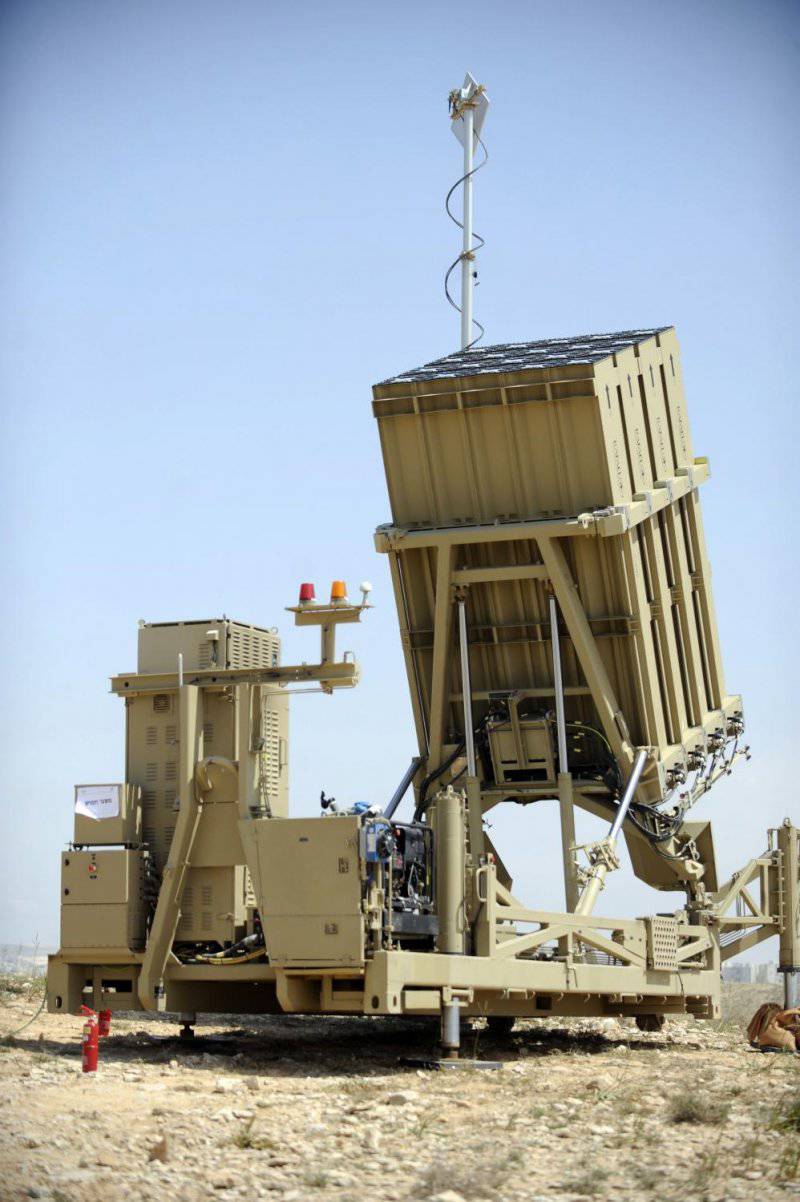
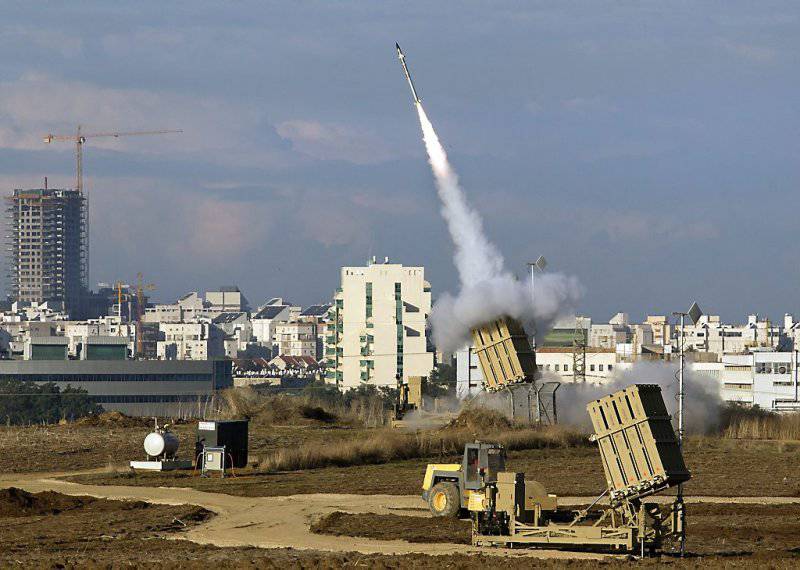
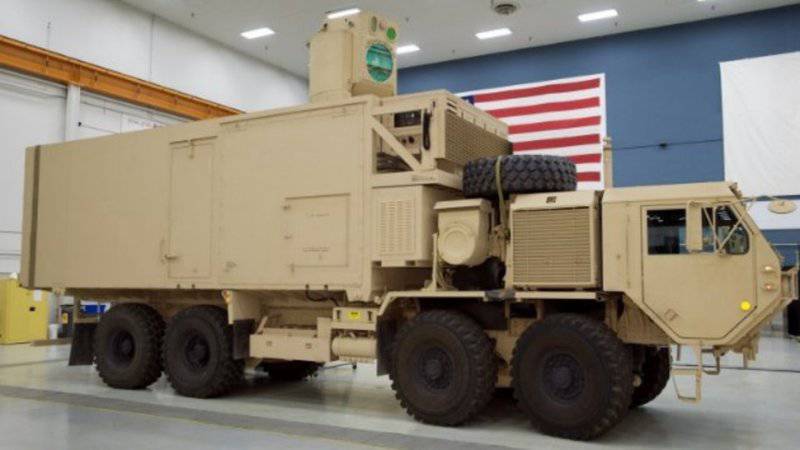
Information